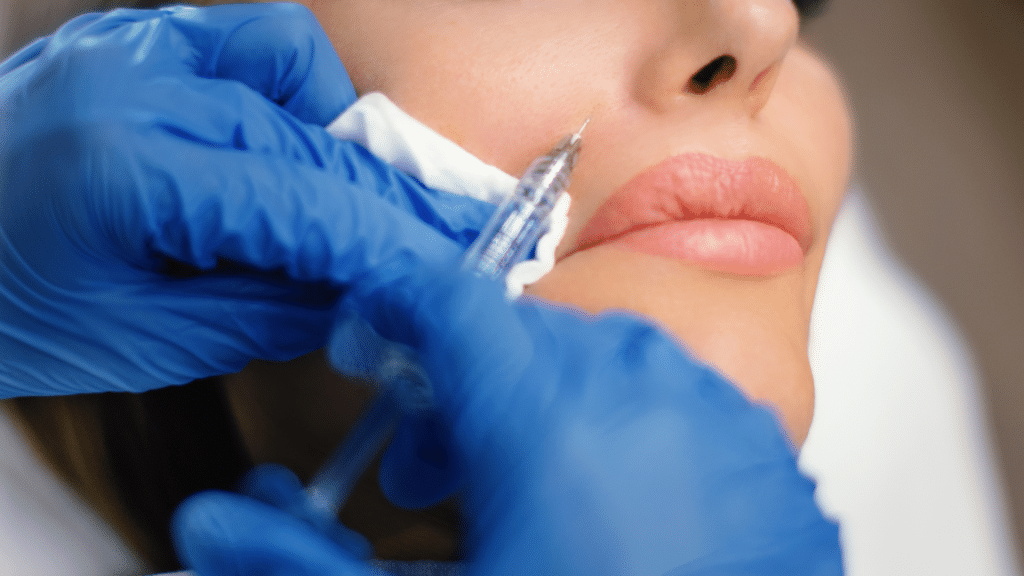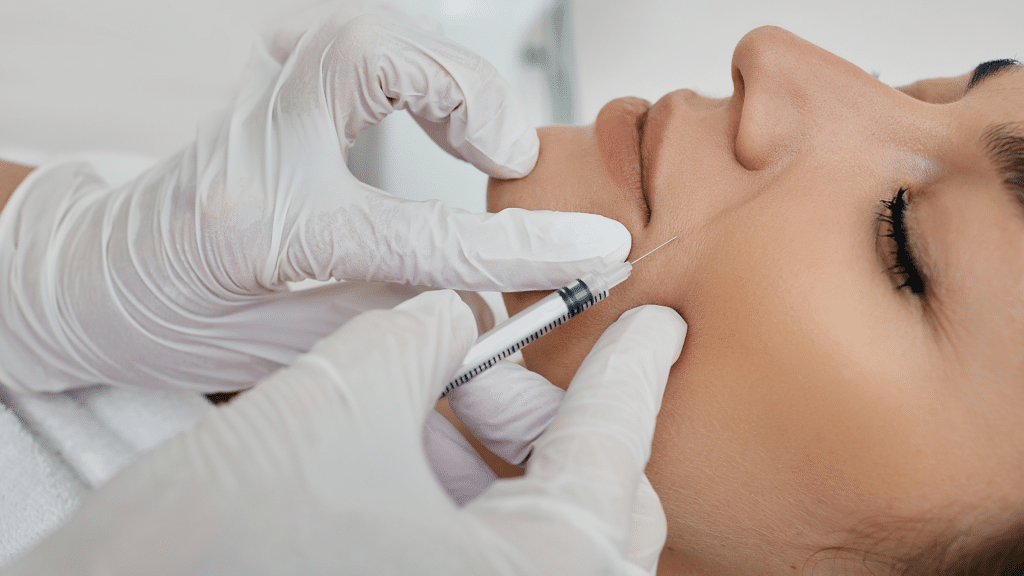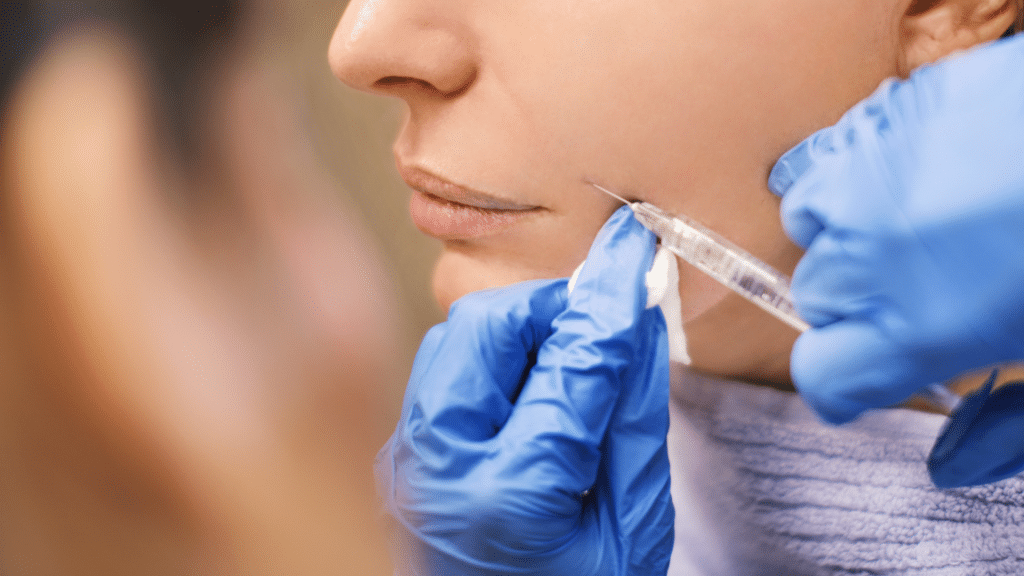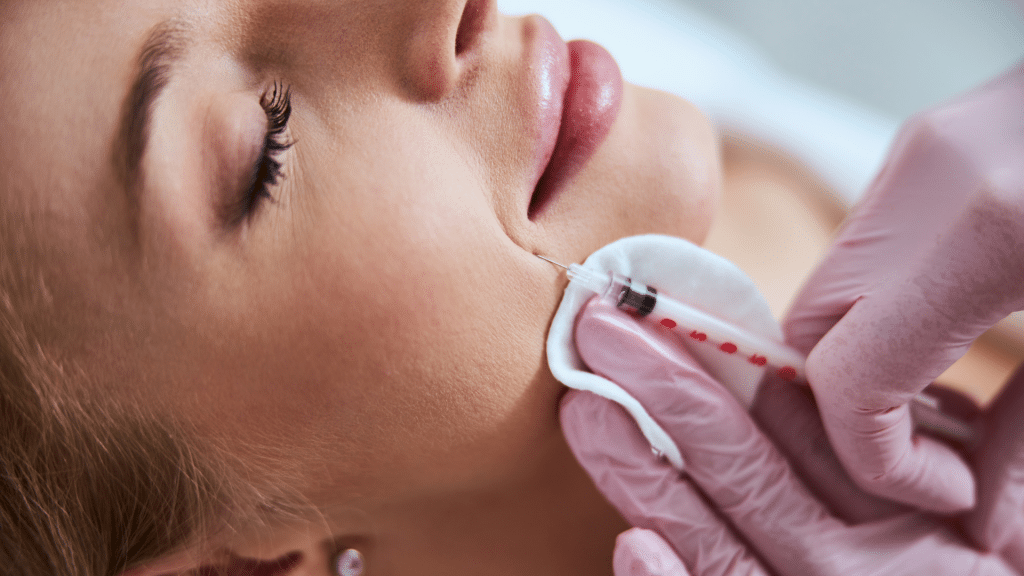A 2022 consumer report indicated that 72% of individuals are bothered by “smile lines” or “parentheses lines,” which are deep wrinkles extending from both sides of the nose down to the corners of the mouth. These lines can impact their confidence. Fortunately, dermal fillers like Juvederm offer a safe and effective solution.
Juvederm, a famous brand of injectable dermal fillers, offers a solution for addressing volume loss in the nasolabial fold area. Its main component, hyaluronic acid, naturally occurs in the skin, making it safe and practical for restoring lost volume and smoothing deep lines.
In this article, we will explore the science behind Juvederm, its application for nasolabial folds, and the duration of its effects.
Key Takeaways
- Juvederm is an effective and popular filler for treating nasolabial folds, offering natural-looking results and long-lasting effects.
- Proper injection technique, including the depth and angle of injection, is crucial for maximizing filler integration and patient comfort.
- Safety protocols, patient follow-up strategies, and long-term care are essential for enhancing treatment success and patient satisfaction.
Understanding Nasolabial Folds and Juvederm

Nasolabial folds, often called “laugh lines” or “smile lines,” are creases that run from the nose to the mouth. They become more noticeable as we age because deep fat in the face goes away over time, and muscle shape in the midface changes, too.
Juvederm fillers fight facial aging, targeting the nasolabial folds that develop with time. These dermal fillers are formulated with hyaluronic acid and work within the skin’s mid-to-deep dermis layers.
The filler smooths out moderate to severe wrinkles and folds, making it ideal for those noticing deeper lines around their mouths and noses. Using Juvederm for nasolabial folds offers significant benefits. This filler smooths wrinkles and restores lost volume in the face, bringing back a youthful look that lasts about a year.
Technique for Injecting Juvederm

Knowing how to inject Juvederm correctly is vital. This skill stops harmful effects and ensures the filler works well. Depth of injection is critical for Juvederm treatments, especially for nasolabial folds. The correct depth ensures the filler integrates well, looks natural, and lasts longer.
For Juvederm Ultra, use a 30-gauge needle in the mid-dermis layer. For thicker Juvederm Ultra Plus, go deeper with a 27-gauge needle. It’s about hitting that sweet spot where the filler does its best work without causing problems.
The angle of injection is critical to natural-looking results with Juvederm. Injecting at the right angle helps the filler blend smoothly under the skin, making nasolabial fold treatment more effective. It’s a step closer to ensuring Juvederm integrates well into the skin for long-lasting effects. These techniques can also be seen in certain procedures like Juvederm before and after in the jowls.
Safety Protocols for Juvederm Injections

Managing adverse reactions is critical in Juvederm injections. Most side effects, like bruising, redness, and swelling, are mild and disappear independently. To keep patients safe, doctors need to know how to prevent these issues before they start. Choosing the right patient is critical for Juvederm treatments, especially nasolabial folds.
Doctors then check the patient’s health history. They look for any signs that might make fillers a bad idea, like specific allergies or skin infections near the treatment area. Moreover, sterilization and aseptic techniques are essential for safe Juvederm injections. Doctors use sterile tools and clean their hands well to keep germs away. They also clean the injection area on your face.
Patient Follow-Up Strategies
Monitoring the long-term outcomes of Juvederm treatments is essential for ensuring patient satisfaction. By tracking the filler’s longevity and the patient’s overall satisfaction, healthcare providers can make informed decisions about future treatments and maintenance.
Healthcare professionals can schedule follow-up appointments to monitor the effectiveness of Juvederm treatments. These appointments provide an opportunity to assess the results, address any concerns, and determine if any touch-up treatments are necessary. Open communication and a commitment to patient satisfaction are essential for building trust and maintaining a positive patient-provider relationship.
Other strategies for patients who have undergone Juvederm treatments may include additional filler injections, skin care recommendations, and other aesthetic procedures. Providers should work with patients to develop a personalized plan for maintaining their results and addressing the natural aging process.
Conclusion
Using Juvederm for nasolabial fold treatment requires a comprehensive understanding of proper injection technique, safety protocols, and patient follow-up strategies. Medical experts can prioritize these aspects to maximize treatment success and ensure optimal patient outcomes. Juvederm offers a reliable solution for addressing nasolabial folds, and when used in conjunction with best practices, it can deliver natural-looking results and high patient satisfaction.
FAQs
1. What is Juvederm used for?
Juvederm helps smooth out those lines from your nose to the corners of your mouth.
2. Does getting Juvederm hurt?
You might feel a quick pinch, but it’s usually not too bad.
3. How long does Juvederm last in nasolabial folds?
Expect the smoother look to last up to a year or so.
4. Can anyone get Juvederm treatments?
Most people can, but you’ll chat with a doctor first to ensure it’s right for you.
5. How soon will I see results after getting Juvederm?
You’ll see the difference right away – no waiting needed!
References
Tanaka, O. M., Cavassin, L. D., Gasparello, G. G., Meira, T. M., Miyoshi, C. S., & Hartmann, G. C. (2023). The Esthetics of the Nasolabial Fold and Age in the Elderly Via Eye-Tracking. Contemporary clinical dentistry, 14(1), 18–24. https://doi.org/10.4103/ccd.ccd_539_21
Sadek, A., Elshebl, D., & Nagaty, A. (2020). Soft tissue fillers for the periorbital region. In Soft Tissue Fillers (pp. 55-68). Springer. https://doi.org/10.1007/978-3-030-46866-8_4
Healthline. (n.d.). Nasolabial fold filler. Retrieved from https://www.healthline.com/health/nasolabial-fold-filler









